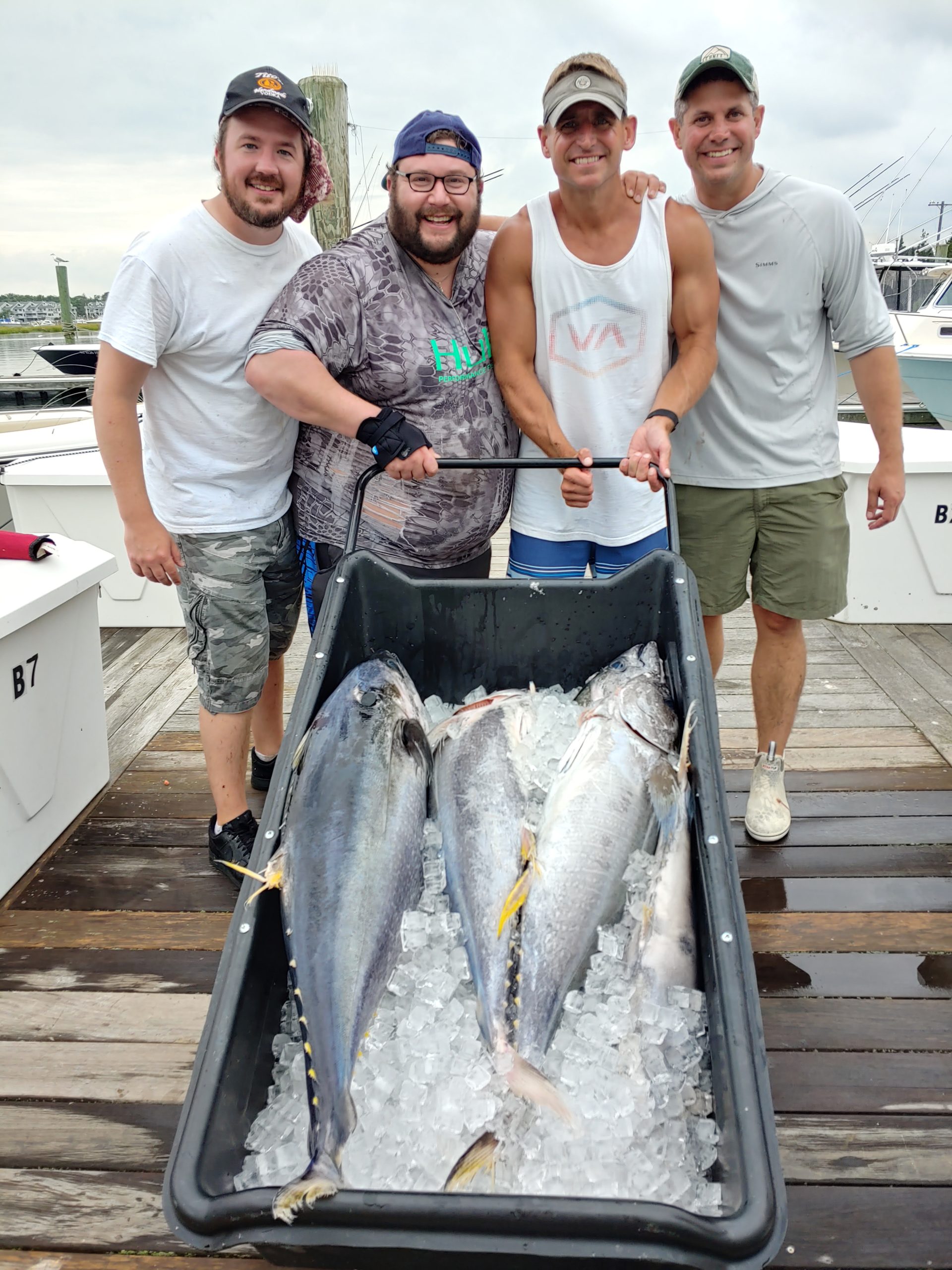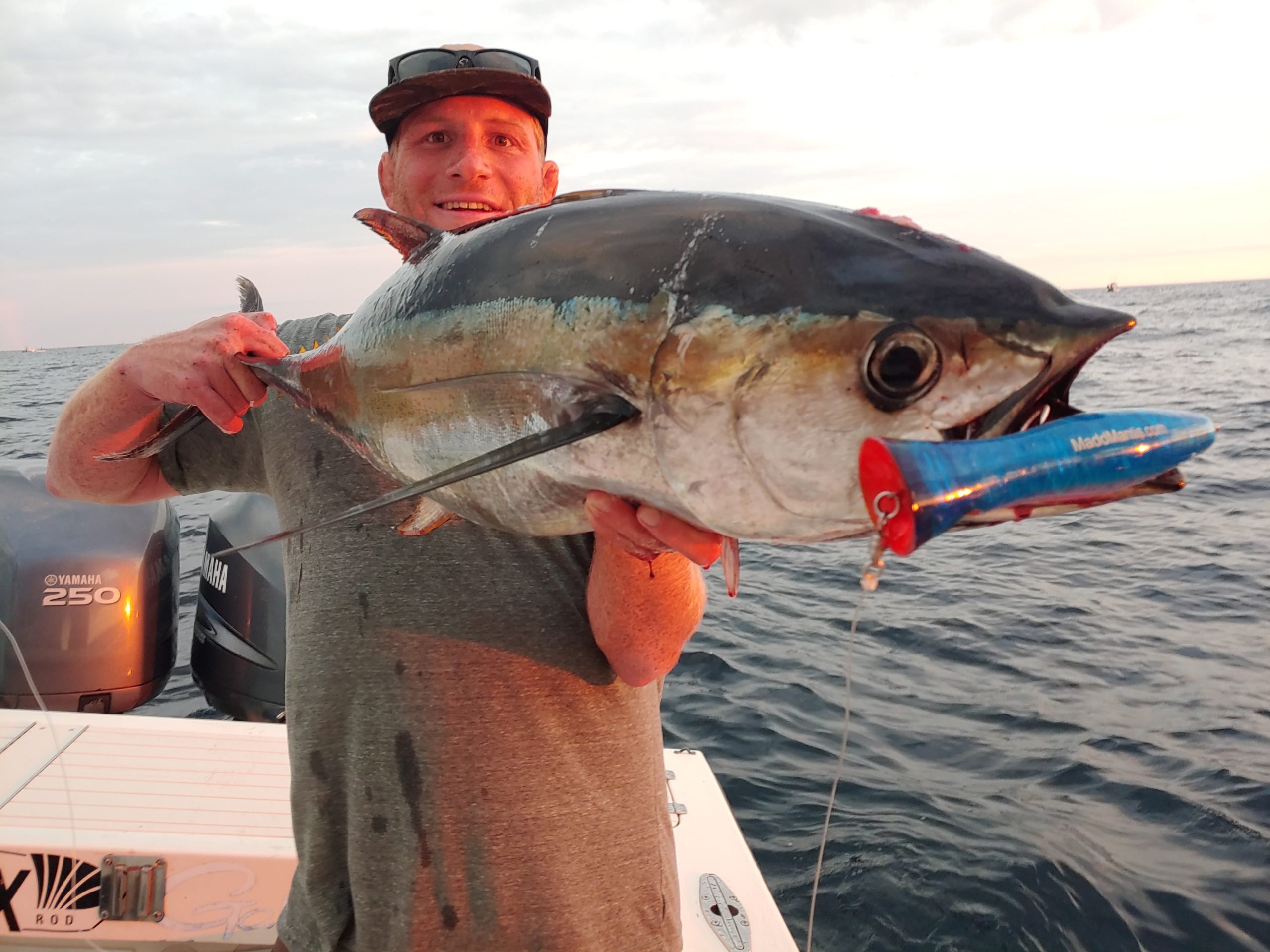
“Set the hook hard three times, you’re tight. Now hold on and enjoy the ride.”
“Everyone keep your eyes peeled and look for massive feeds of finbacks and short beak dolphins; that is where we will find the tuna”. These were my typical instructions to my clients and on each trip last summer to the yellowfin grounds. On any given day one could find finbacks and short beaks, aka two tones, feasting on sand eels in their typical fashion as they dove deep below the bait and blew bubbles underneath them to get them to rise to the surface. From here the finbacks would beat their tails on the water’s surface radiating shock waves through the water column stunning the bait.
These massive mammals put on quite a Nat Geo show that memorized clients as they watched in awe. But watching was only part of the fun as our quarry was with this melee, yellowfin tuna in the 50- to 100-pound range that would dart in and out feeding to their heart’s content inhaling the stunned baits.
My son and mate Tommy shouts “Dad a quarter mile to the northeast there’s vapor spouts.” I quickly turn in that direction and run right smack into what we were looking for. “Grab those popping rods and let them fly,” I said.
“Pull and pause, pull and pause,” I advised, until “Billy, he’s on it, he ate it, set the hook hard three times, you’re tight. Now hold on and enjoy the ride.”
MIDSHORE MADNESS
As I said, this is the drill as we head out each summer day in search of Jersey yellowfin. Find the feeds and you’ll find the tuna. And if this season is anything like the 2021 season it will once again be a much closer ride then in many years past. Last August the yellowfin set up at the Princess Lump east of the Manasquan Inlet, a ride of about 50 miles. For us when heading offshore we consider this close and call it the midshore or middle grounds.
What was even more amazing last season the yellowfin came inshore only 16 miles out into Little Italy and stretched out to the Resor remaining there for about two weeks. Then throughout September until October 15 the yellowfin were again plentiful around the Princess. The yellowfin got larger as the season progressed with some legit 90- to 100-pounders caught on poppers. The number of yellowfin showing up on the midshore grounds has also been increasing in the last three seasons with words like epic, unbelievable, amazing, best ever, and crazy used with regularity.
Targeting yellowfin with spinning gear and poppers is an exhilarating experience and never gets old even after you have caught many. Yellowfin will explode on a popper and many times come out of nowhere. When they are in an area, they are much easier to catch than bluefin as they strike out more readily. I have had days when catching them was like catching bluefish. Last season there were many anglers that got to experience their first tuna ever on a popper due to the sheer number that were around.
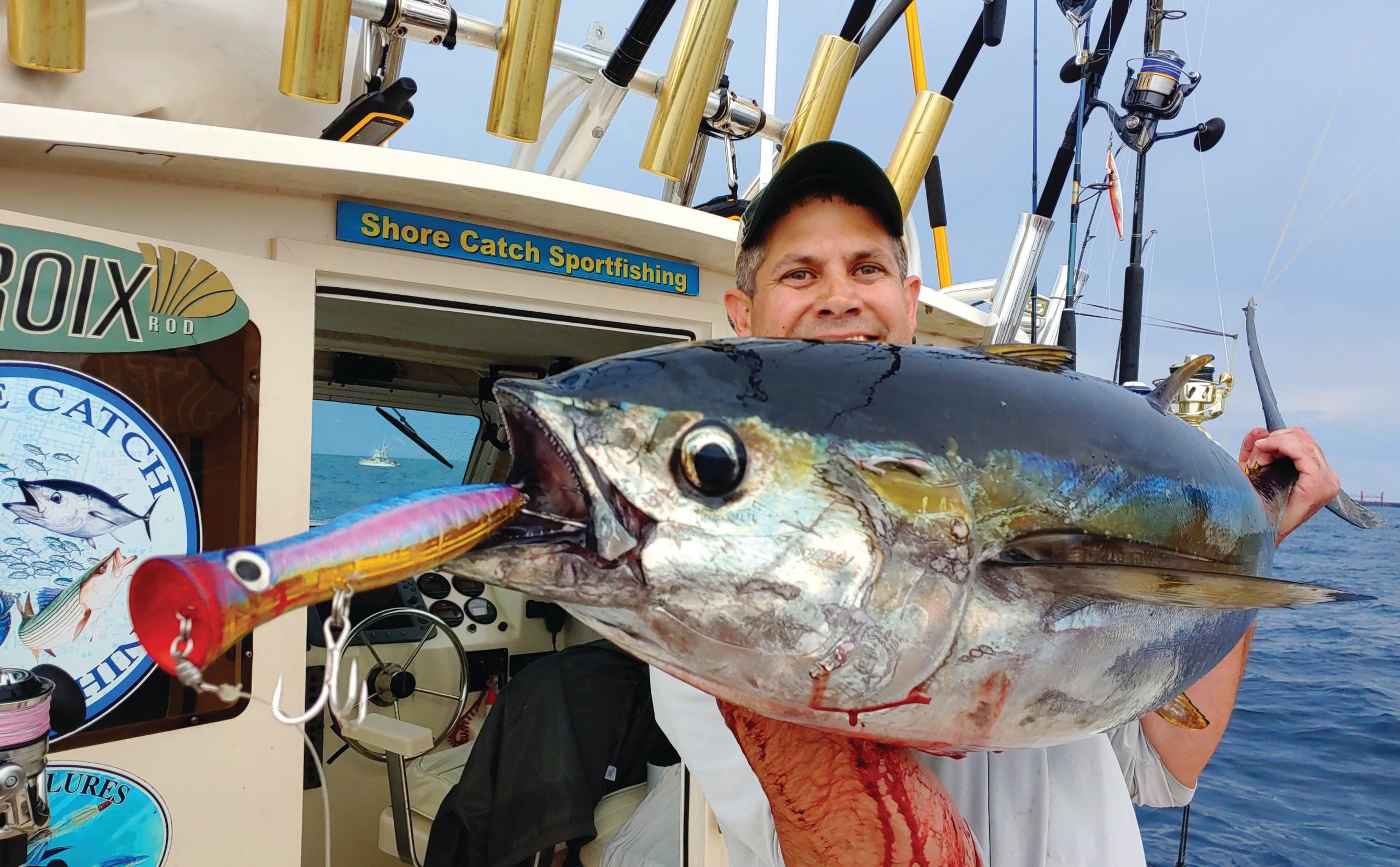
TEASE & POP
First rule of thumb to catch a yellowfin on a popper is that you need to be casting and throwing a popper always. If the rod is not in your hand it goes without saying that you will not catch. This means to blind cast a popper when you are not in a feed but still know tuna are under the boat, because you are catching them jigging, or on chunks, or you are reading them on your fishfinder.
Throwing chunks or live peanuts in the water is a sure fire way to get the yellowfin to school around your boat and to keep them there. As the yellowfin came up you will see them in your slick picking off the baits almost as soon as they hit the water. Once they’re all fired up, casting the popper into the mix works very well. The surface commotion of the popper will get their attention and they zero in on it with a massive explosion often, like I said, appearing out of nowhere.
When in a feed what works best is to cast the popper right in the middle of the pod and to get off a good series of sweeps and pauses. This scenario is the most exciting adrenaline rush as you are anticipating a strike at any moment. If you get a strike and swing and miss quickly take another two or three pulls and then pause. This will entice the yellowfin to strike again so be ready to set the hook quickly when you feel the bite.
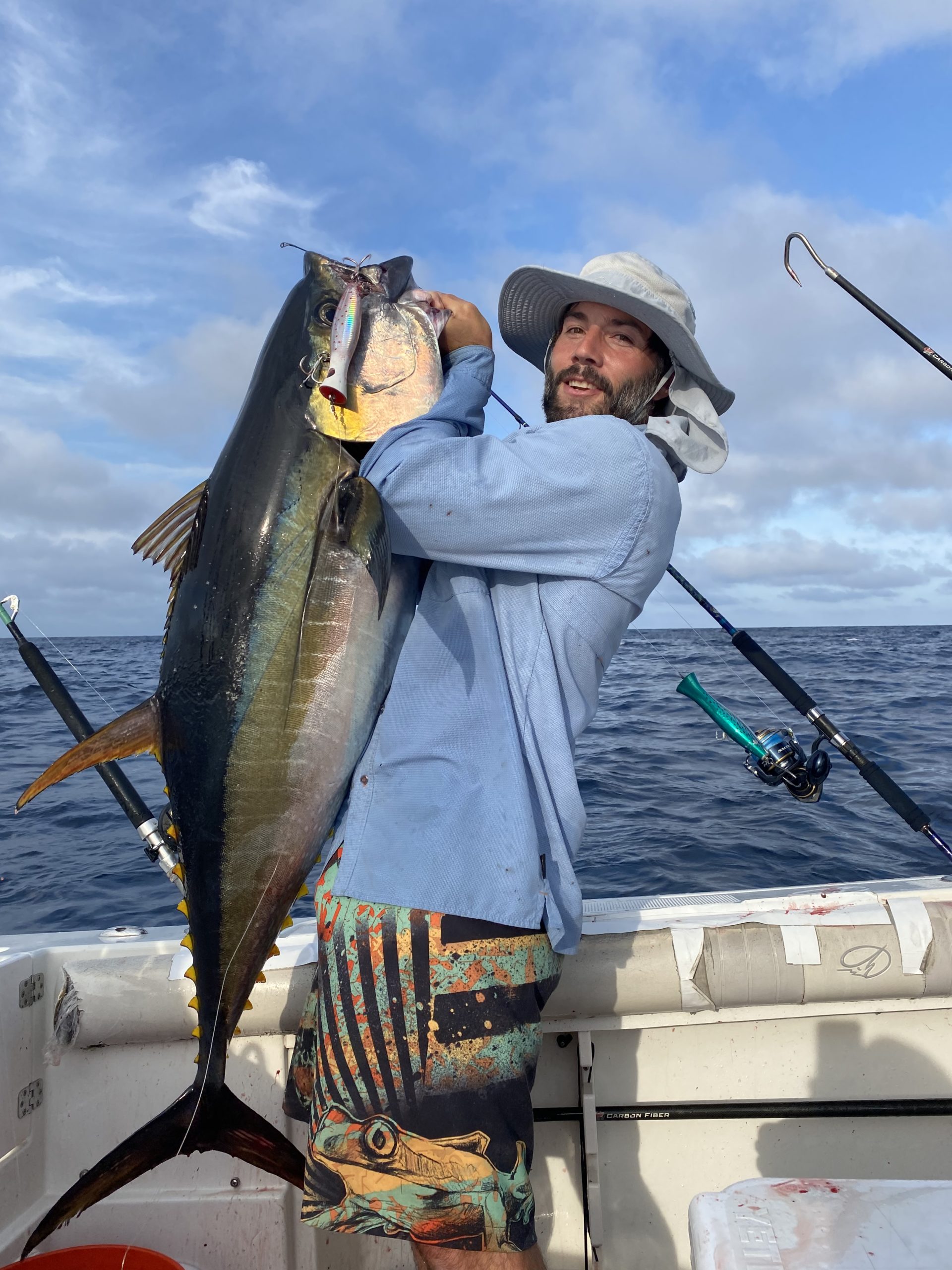
ALL GEARED UP
My most productive poppers are the M. Fischer, Nomad Chug Norris, and the new XL Madd Mantis. Some of the most productive colors are prismatic pink or blue, white, and without a doubt the frost colored Mantis. My rod and reel of choice when casting poppers is a 7-foot, 8-inch to 8-foot, 2-inch specialized spinning rod like the 7-foot, 9-inch Centaur Chiron Inshore Game or Nomad 7-foot, 8-inch popping rod. For reels I use the 14K Shimano Stella or 14K Twin Power. These are spooled with 80-pound Nomad Panderra braid.
I like to use an 80- to 100-pound BHP Tackle fluorocarbon pre-made casting leader that has a loop in the end. This is looped-looped to my braid. When throwing poppers since the leader is out of the water just about all the time you can get away with the 100-pound test. If I was throwing stickbaits to these yellowfin I would drop down to the 80-pound so as to reduce its visibility in the water. The loop connection between the casting leader and the braid should not sit around the reel when you are ready to cast or it will cut down on your distance. It should be just off the reel below the first guide. For this reason, I will cut down the pre-made BHP 12 foot leaders to about 8 feet.
With the high cost of fuel, it is a good idea to get as much intel as possible the night before your trip from fellow anglers that have been on the tuna grounds the day before. If they had a good catch I would say to run to their numbers if they are willing to share them with you. Hopefully they will, as this is the best to help each other out as together we all catch more fish. The reason I say it is a good bet to go back to the exact numbers is that if no weather or sea conditions have changed from the day before than more likely than not the bait the yellowfin are feeding on will still be there. In August this bait is sand eels; once sand eels take up residence in a certain area they have no reason to leave. Only a big blow producing a hard bottom current will trigger their departure in the summer. With the sand eels there the yellowfin have no reason to leave either.
If intel is hard to come by then look at your waypoints where you caught the year before and head in that direction. Patterns can repeat themselves from year to year especially if bait is in the area. You can also analyze computer generated offshore charts for water temperature and turbidity breaks the night before or morning of your trip as this can be advantageous as tuna will set up along these edges. These edges act as structure and will attract and hold plankton, baitfish, and consequently bring in the tuna.
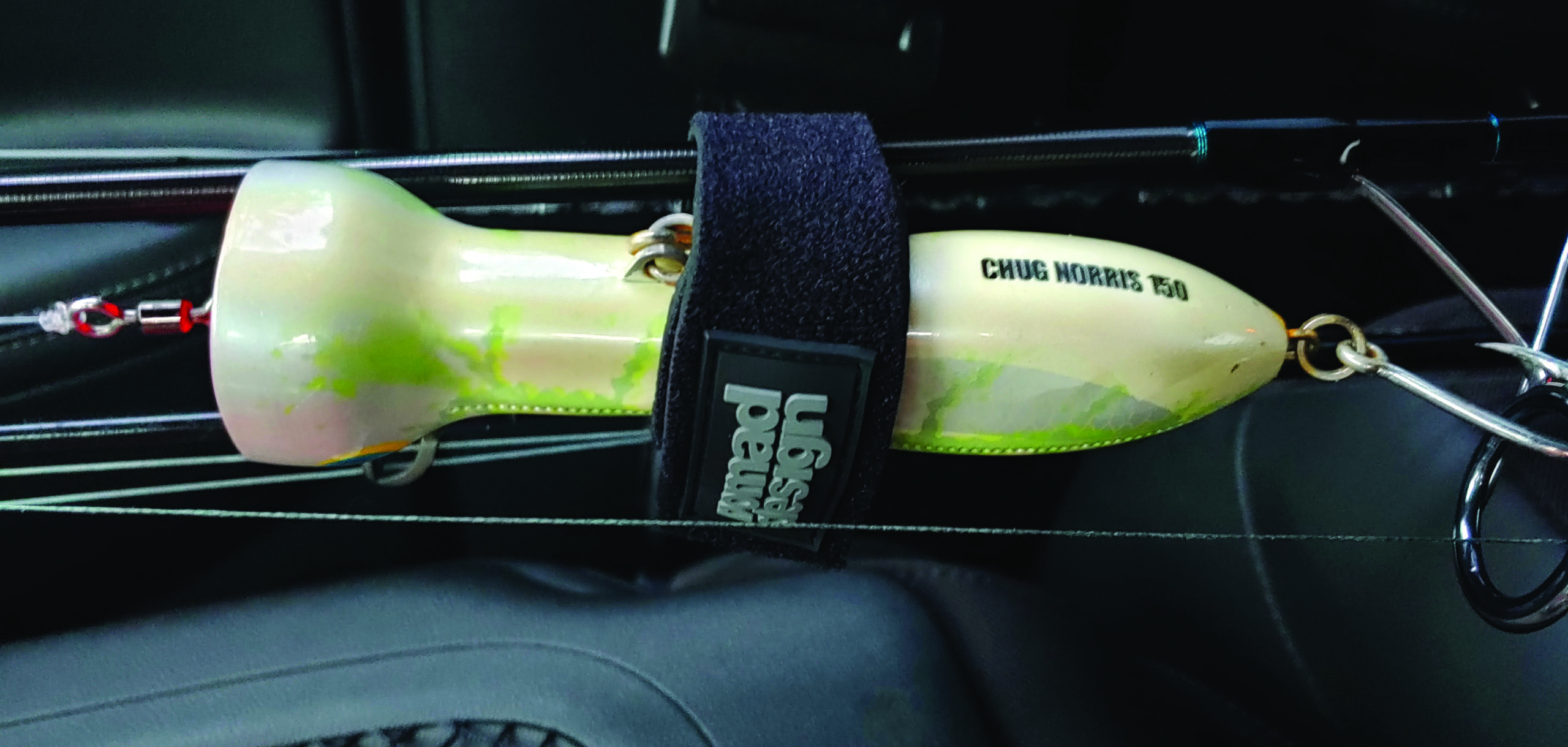
LOOK FOR DOLPHINS
Another scenario for targeting topwater action is when the yellowfin swim with the dolphin and move along at a quick pace. The yellowfin and the dolphin have a symbiotic relationship that keeps them together as they hunt down prey in the ocean. Here however you will need to chase down the pod and get in front of it and quickly make a cast into the pod. It isn’t easy for first time clients to deliver that perfect long distance cast and execute this drill so you need a crew that is proficient and skilled at doing this. In either cases the popper retrieve that we have found that triggers strikes the best is again a pull or kerplunk followed by a pause. It is usually on the pause that a yellowfin will crash or explode on the popper as they most likely perceive the popper as an injured or stunned bait. – Capt. Jim Freda.
